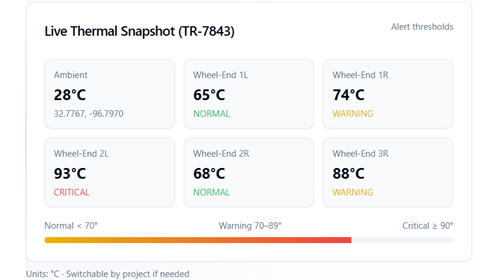
/
January 10, 2022
/
#
Min Read
These Chevy Bolts Are on Fire! Could a Vertically Integrated OTA Platform Have Helped?
Keeping you apprised of the latest in software-related recalls in the automotive industry, we are back with “The Recall Notice.” Over the last several months, we’ve gone over faults and malfunctions that could have been remedied with a simple software update. With this month’s recall, we will be switching gears.
On September 8, 2021, the National Highway Traffic Safety Administration (NHTSA) issued a recall on certain General Motors electric vehicles for defective batteries. Although the solution requires changing out the affected hardware, the problem could have been alleviated with a vehicle-wide OTA software solution. Read on to find out how.
Snapshot
NHTSA Campaign Number: 21V650000
OEM: General Motors LLC
Components: High voltage battery pack and high voltage battery cell module
Estimated Vehicles Affected: 52,414
Remedy: Free replacement of defective batteries
Estimated Cost to OEM: $15.7M - $26.2M
What the Problem Was
NHTSA Recall 21V650 pertains to two manufacturing defects in the high voltage batteries found in specific GM electric vehicles. When both faults are present, they increase the risk of the battery module catching on fire. This hazard is exacerbated by how the battery is charged. Vehicles that are frequently charged to full or near-full capacity after reaching a depleted state showed the highest risk of fire. Warning signs include smoke, excessive heat, and flames.
A problem like this not only increases the risk of damage to the vehicle’s components but also jeopardizes the driver’s life and even their home. Owner notification wasn’t scheduled until the first of October. However, due to the serious nature of this fault, on September 10th General Motors LLC. distributed preliminary letters with guidance on mitigating these risks. GM encouraged owners to:
- Set the “Target Charge Level” to 90%
- Avoid depleting the battery to under 70 miles
- Increase charge frequency
- Park outside
- Do not leave vehicle charging indoors overnight
This was only a temporary fix, as GM had yet to figure out a permanent solution to the problem.
The Scope of the Recall
There are 52,414 units affected by NHTSA Recall 21V650. These include 45,028 Chevrolet Bolt EVs from model years 2020 to 2022 and 7,366 Chevrolet Bolt EUVs from the 2022 model year. However, the actual scope of the battery defect is much larger.
In July 2021, GM submitted NHTSA recall 21V560 for Chevrolet Bolt EVs with an N2.1 battery cell design. The safety recall was based on data provided by LG, the battery manufacturer, and included over 57,000 Chevrolet Bolt EV vehicles from 2017-2019. It wasn’t long until GM received a report of a battery fire in a model outside of the recall population. After further investigation, by both GM and LG, NHTSA 21V650 was created to expand the scope of NHTSA 21V560.
How Sibros Could Have Helped
GM is no stranger to OTA technology. Since 2009 it has used over-the-air updates for its OnStar and infotainment systems. In 2019 GM launched its Vehicle Intelligence Platform (VIP) which is designed to provide vehicle-wide EV, safety, connectivity, infotainment, and driver assistance updates. Unfortunately, fleetwide VIP rollout isn’t expected until 2023, which means certain models remain ineligible for OTA software updates, including the Bolt EV and EUV.
Sibros Deep Connected Platform (DCP) is designed for seamless fleetwide integration, which significantly eases the rollout of OTA update-ready units. What is the benefit to having the entire GM fleet ready to receive vehicle-wide updates when the problem isn’t software-related? Well, even though the manufacturer can’t replace the faulty batteries with an update, they can mitigate the risks associated with them.
The OTA Deep Logger feature collects and tracks data from all electronic control units (ECUs) within the vehicle. Along with customizable parameters, this information can be utilized to trigger a real-time warning or failsafe. For example, the OEM could design an update that monitors battery temperature. When the battery exceeds safety limits, the software automatically responds by sending the owner a warning to turn off the engine and move away from the vehicle.
In addition, the DCP allows OEMs to create target groups based on both static and dynamic features. This means the manufacture can send software updates exclusively to the affected units, rather than the entire fleet. If GM had DCP, they could have sent updates to prevent the battery from fully charging, issue warnings when the battery approached depletion, and even restrict charging to a specific time of day. Unfortunately, GM was limited to advice letters and an interim battery fix that requires manual deployment.
When VIP is up and running, it might help GM handle these types of recalls more effectively. However, since the platform is still in the initial stages of rollout, the manufacturer will likely be facing a series of unexpected bug fixes and unrealized limitations. On the other hand, DPC offers a time-tested OTA software solution that is fleet-ready and adheres to the industry’s highest safety and cybersecurity standards.
Impact and Savings
Most recalls cost an OEM between $300 and $500 per unit, but NHTSA 21V650 is no ordinary recall. It involves the replacement of tens of thousands of electric car batteries, which cost an average of $6,300 per unit. Instead of a price tag between 15.7 and 26.2 million dollars, GM is looking at a monetary loss of over 330 million dollars. This does not include vehicles covered in NHTSA 21V560.
What’s more, this recall has a large potential for financial losses related to damage and injury. GM is already facing a class-action lawsuit for the Chevy Bolts from the initial battery recall and might be looking at something similar for NHTSA 21V650. This is where having a fully functioning OTA software solution would have come in handy. OTA software updates may have been able to prevent some of the fires associated with the defect, as well as alleviated customer concern and grounds for legal action.
Not all recalls can be fixed with a push of a button, but they can be identified and mitigated sooner with the help of a vehicle-wide OTA software solution, like Sibros DCP. Don’t wait until it’s too late to make a difference. Be proactive about the future of your fleet. Contact Sibros today to set up a demonstration.






-min.png)



